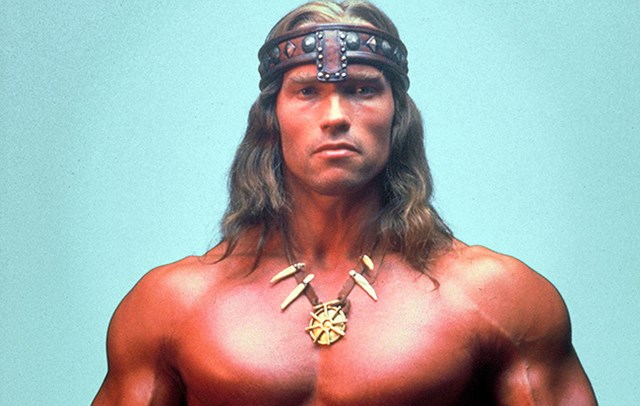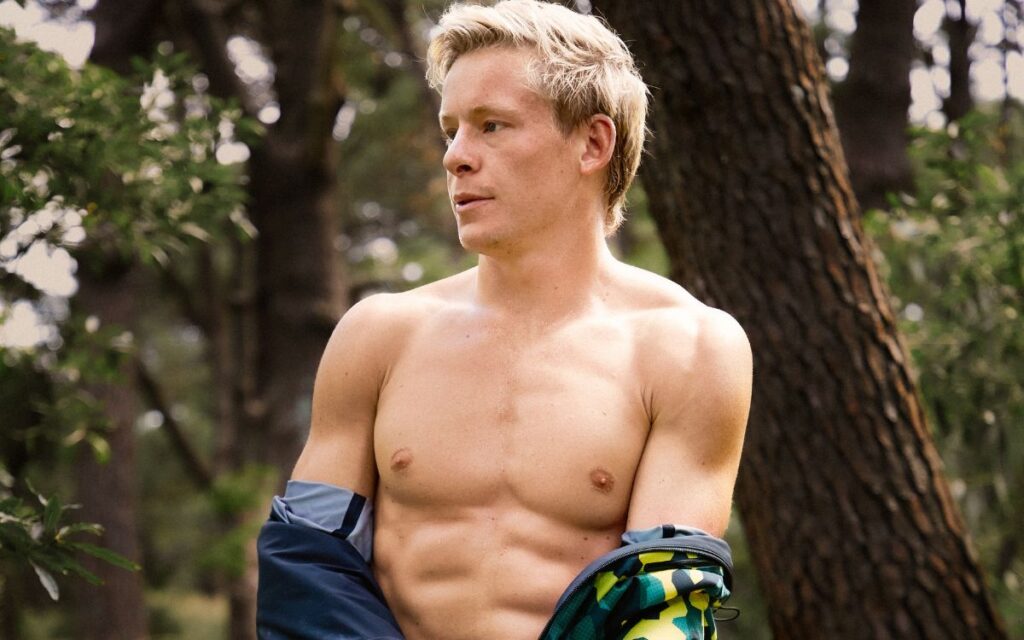
In the Clint Eastwood movies I grew up watching, the hero didn’t train. It didn’t matter if he was playing a cop, a cowboy or a soldier; whatever he was at the beginning, that’s what he was at the end, squinting over the body count he’d created with skills we never saw him develop or practice.
I later learned that Clint Eastwood the human being trained hard off-screen to make it look so effortless in Technicolor. But in my youth, I rarely saw my favourite action hero sweat.
Sylvester Stallone changed all that.
When Rocky came out in 1976, we saw a genuine transformation. Boxer Rocky Balboa is what fighters call a tomato can, a 30-year-old with no past glory and no future prospects … until he gets that one-in-a-million shot at the heavyweight title.
His opponent, Apollo Creed, is more like a traditional movie hero. He’s the guy whose incredible physique and boxing skill seem immaculately conceived. But he’s the villain of this movie. The hero is the one we see working for everything he gets.
Rocky seemed like a turning point for my generation. It’s hard to say if it was a catalyst for the fitness boom that followed, or if it was just a coincidence that Baby Boomers found a passion for workouts shortly after it came out.
But it sure led to a lot of movies with training scenes. The quality of those scenes was wildly inconsistent. For every inspired and inspiring workout sequence, there were several that made no sense whatsoever.
Even good movies included scenes in which the hero does exactly the opposite of what he’d need to do to get the results he ends up with.
Let’s start there.
Click here to discover how Matt Damon got in the best shape of his life at age 45
The Karate Are-You-Kidding-Me?
The first time I called bullshit on a movie was the original Conan the Barbarian, which came out in 1982. It starts with the slaughter of young Conan’s mum and their neighbours, after which he’s taken as a slave and chained to a gigantic wheel. He and the other slaves apparently do nothing but push that wheel around and around.
Somehow, that boy grows up to become Arnold Schwarzenegger.
How did that work? How would a single exercise – done all day, every day, with no time for recovery and who knows what maggot-infused gruel for nutrition – allow someone to live long enough to reach puberty, much less develop the physique of a champion bodybuilder?
But it’s not the worst offender. When I queried some of my favourite training and nutrition experts, several cited The Karate Kid (1984).
“It’s an awesome movie,” says trainer Alwyn Cosgrove, who was a tae kwon do champion in his native Scotland before moving to the US. “I was 12 when I saw it the first time, and I can remember being blown away.
“That said, I find it highly improbable that washing cars, standing on a log on the beach and kicking into the waves will help you beat the defending All-Valley Under-18 champion – especially when he can beat your arse in a real fight.”
Any trainer would point out the absurdity of slow, repetitive movements – “wax on, wax off” – helping a martial-arts novice attain lightning-fast reflexes virtually overnight.
But it’s not just the stupidity of the training methods that riles up fitness pros. It’s the result.
“The idea that someone with approximately six months of training could enter a full-contact black belt karate tournament is ludicrous,” says Ethan Benda, a trainer, bodybuilder and competitor in Brazilian jiu-jitsu. “In actuality, he would have lost his first match badly, walked away humiliated, been dumped by his girlfriend, and had to deal with the awkward silence between him and Mr. Miyagi.”
Between Rocky and a Hard Place
Nobody would call Rocky Balboa a wuss. In movie after movie, Stallone had his favorite character push himself beyond human possibility, all for the chance to get his brain liquefied by the fists of Apollo Creed, Clubber Lang and Ivan Drago.
But if you’re judging movies by the quality of their training sequences, you can’t give a pass to any of the Rocky movies, including the first one.
When I watched the original recently, three things caught me by surprise.
Rocky smokes.
Rocky doesn’t start to train for his championship fight until halfway through the movie. Once he starts training, he has just five weeks to get ready.
Think about that: five weeks to go from a tomato can who struggles to put away a bum named Spider Rico in the opening scene to the guy who sprints up the steps of the Philadelphia Art Museum, and then goes 15 rounds with the world heavyweight champion.
It makes for a great movie, sure, but it violates everything we know about athletic training and skill acquisition.
The sequels seem plausible by comparison, since you already accept the absurdity of an untrained nobody fighting a vastly superior athlete to a draw. Stallone himself is so jacked by Rocky III (1982) that the workout scenes look like fitness porn.
Rocky IV (1985) has what could be the most talked-about training sequence in movie history. Those scenes anticipate both CrossFit and adventure racing by at least two decades.
But that’s where Cosgrove and Benda take issue. “Rocky IV always bugged me because he does no sparring in his training,” Cosgrove says. “But at least ‘Hearts on Fire’ is a good song.”
Benda goes even farther. “What we have is a classic example of a fighter thinking that strength and running a lot translates into boxing skill,” he says. “What makes someone a better boxer/kickboxer/general arse-kicker is practicing boxing/kickboxing/arse-kicking.”
Then there’s Rocky Balboa (2006), the sixth in the series. The premise is that Rocky comes out of retirement for one last fight, a charity exhibition.
“But he’s old, creaky, and slow,” Benda says. “There’s no amount of training that could bring Rocky back to his prime.”
The movie tries to work around that uncomfortable truth by having Rocky (played by the 60-year-old Stallone) train for pure strength and power, with the goal of inflicting maximum damage with each punch.
But that premise is ludicrous, Benda says. “Anyone in combat sports can tell you that being able to hit hard is about 10 per cent of the equation. Skill and speed always trump pure power.”
Is That a Light Saber in Your Pocket?
Transformation scenes in superhero movies have a lower plausibility threshold than movies about boxing. It’s easy to believe Luke Skywalker’s training in The Empire Strikes Back (1980) is exactly how Yoda would train a Jedi, if Yoda and Jedi actually existed.
Same with Bruce Wayne’s ninja training by the League of Shadows in Batman Begins (2005). Unless your circle of friends includes a billionaire who moonlights as a crime-fighting vigilante, how would you know?
But that doesn’t mean they all get a pass.
If you’ve seen The Dark Knight Rises (2012), you remember the moment when Bane (the bad guy) breaks the back of Batman/Bruce Wayne. That set off alarms for trainer and physical therapist Jonathan Fass.
Wayne’s injury is described as a protruding vertebrae, Fass notes, “which would have caused significant paralysis,” because the spinal cord and its supporting ligaments would’ve been irreparably damaged.
And that’s only if he hadn’t bled to death from the injury itself.
But the real problem, Fass fumes, was the fix: “A makeshift traction rig and a quick slap on the back was all that was needed for Bruce to ‘walk it off’ after they finally took him out of his harness.”
The most damning part: the sequence was based on the Knightfall series of graphic novels, in which Bane breaks Batman’s back and he recovers. “But even the comic rehab was more believable,” Fass says, “and that involved magic energy.”
Eat Right for Your Ass-Kicking Type
Some movies get training exactly right, in the eyes of our experts. Take the blink-and-you-miss-it scene of Bradley Cooper deadlifting 180-plus kilos in American Sniper (2015).
“What I loved is that it showed a guy training with something badass, rather than the normal bench-pressing or biceps curls,” says Tony Gentilcore, co-founder of Cressey Sports Performance.
If you read our interview with Cooper, you know he also ate like a badass – over 20,000 kilojoules a day – to gain 15 kilos for the role of war hero Chris Kyle.
But that’s real life. In movies, nutrition is something the filmmakers almost always get comically wrong.
Take another of Gentilcore’s favourite sequences, in Kill Bill: Vol. 2 (2004). “The whole montage of Uma Thurman training alongside Pai Mei is awesome,” he says.
But, as cool as it was visually, I couldn’t help but cry foul at two aspects of it.
First was seeing Thurman’s character, assassin-in-training Beatrix Kiddo, slam her fist repeatedly into a solid wood plank. You’d think, given the mismatch in size and density between her knuckles and the board, that she’d come out of it with permanent deformities. But she emerges without a single broken bone. Not even a splinter.
Second was seeing her eat a small bowl of rice every night after a full day of training. The goal was to show the sacrifices she made, but I wondered how she lasted a week with so little food, much less long enough to learn Pai Mei’s secret eyeball-plucking and heart-exploding techniques.
The same goes for Vision Quest (1985), the story of a high school wrestler who decides to drop two weight classes so he can test himself against the best wrestler in his area.
Cosgrove says it might be his favourite, and it’s near the top for me as well. Partly it’s because Linda Fiorentina was, what we said back then, smokin’ hot.
But mostly it’s the training scenes, especially the one with a wrestler walking up stadium bleachers while carrying a log on his shoulders.
But while I was crushing on the workouts (and Fiorentino; okay, mostly Fiorentino), Men’s Health nutrition advisor Dr Mike Roussell, was gagging at the diet plan.
“No way could he starve and dehydrate himself like he did while still making those strength gains,” he says.
Roussell has a similar problem with The Matrix (1999). After Neo, the character played by Keanu Reeves, is pulled out of his cocoon and forced into the real world, his reward is … a daily bowl of oatmeal mush.
“How is that supposed to nourish him?” Roussell asks.
We Who Are About to Fork Over $20 for a Movie Ticket Salute You!
I could go on all day about the movies our experts cited for both positive and negative reasons. But to wrap it up, I’ll let Benda contrast one of his favourite training sequences, from Dodgeball: a True Underdog Story (2004) and one he enjoyed a bit less, from Rocky II (1979).
He starts with high praise for the eccentric coaching techniques of Patches O’Houlihan in Dodgeball: “Their basic calisthenics and attention to actually catching, throwing and dodging makes sense, up to a point.”
If you’ve seen the movie, you know that “up to a point” refers to O’Houlihan throwing wrenches at the head of one of the lovable losers from Average Joe’s.
But, Benda notes, it is sport-specific, and it contrasts sharply with a famous scene in Rocky II. “Dodging a wrench translates to dodging a ball better than chasing a chicken translates to boxing footwork,” he says.
And that’s movie training for you. If you like the movie, and identify with the hero, you try not to think too hard about how he gets to the climactic moment of triumph. You’re just happy to see him get there.














